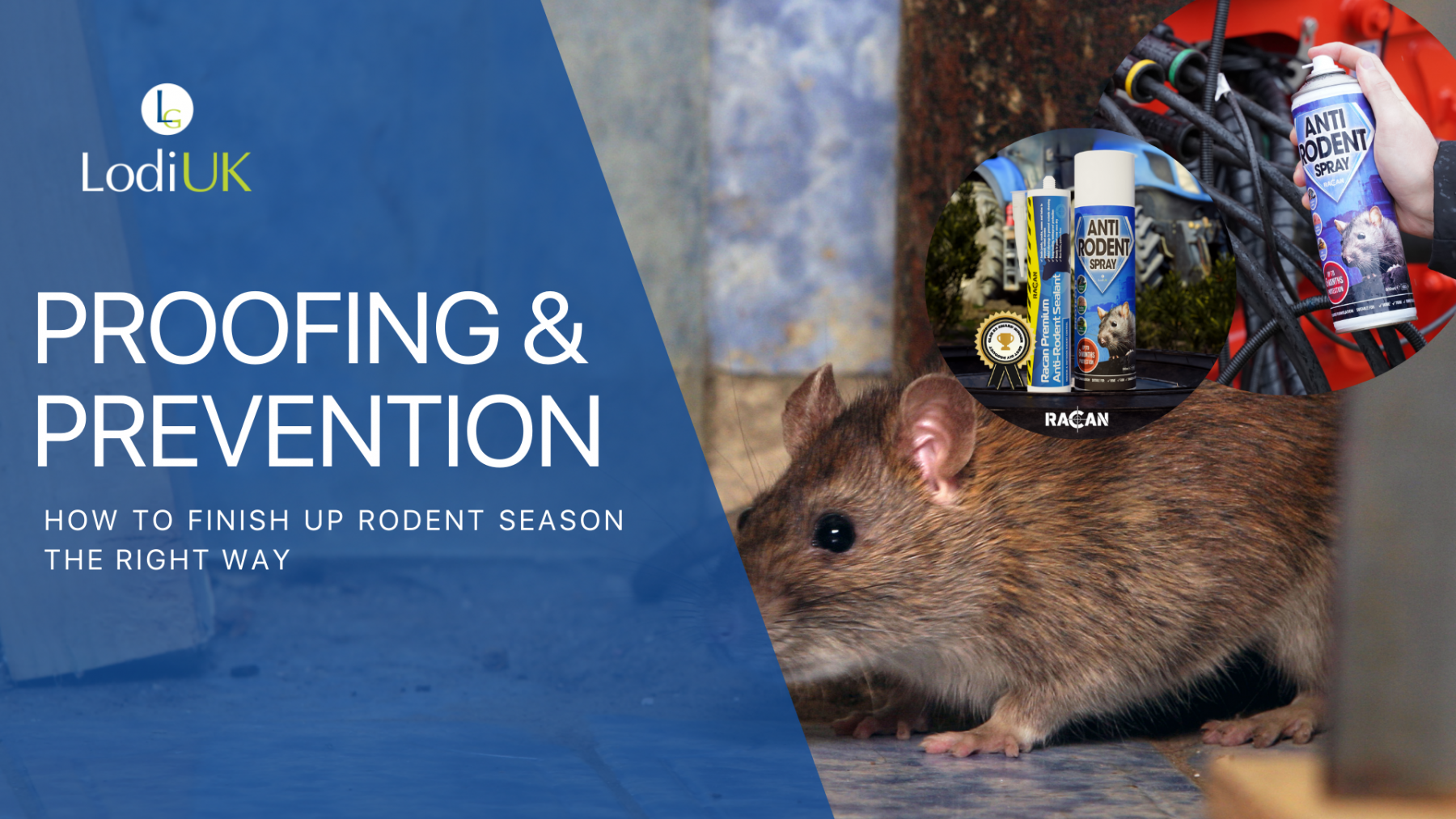
Farmers invest large amounts of capital, time, and effort into producing and harvesting their crop. The storage of the grain post-harvest is part of that dedicated process. The ability to secure grain stores and prevent loss of yield is a key part of crop management, as it enables farmers to retain stock and watch global fluctuations of grain prices in order to ultimately sell when prices are high. Typically, selling feed wheat in November will attract a £4/tonne premium over the harvest price and selling in May will give a further £7/tonne. Some farmers may choose to store their grain for up to 12 months.
Between 2019 and 2020, the UK’s wheat yield fell by 37.5%. But prices keep rising, with a sharp rise in grain price at the start of the month, it is more important than ever to protect your crops in store. Worldwide, up to 60% of grain can be lost during storage but this can be as low as 1% with the right store and a good pre- and post-harvest routine. As well as poor growth in the field, unfavourable harvest conditions and inadequate drying, grain store pests can be a source of grain loss.
Common grains store pets
 Insect damage to stored crops is a curse that many arable farmers know all too well. The cost of grain rejection due to pest damage be as high as £50/tonne. Grain store insect pests are separated into primary, which infect the undamaged grains, and secondary, which feed on damaged grains and dust. The most common and damaging pest is the Grain Weevil (Sitophilus granaries), a primary pest. They are seen across the UK and continue to spread through infected grains and grain vehicles. Within its 9-month lifespan, a female can lay 200 eggs, each of which bores into the centre of a grain. The most common secondary pest is the Saw Toothed Grain Beetle (Oryzaephilus surinamensis). The larvae of this beetle feed on the broken kernels left behind by primary pests such as the grain weevil. Both the Grain Weevil and the Saw Toothed Grain Beetle are hardy and can survive in the cracks and crevices of the grain store over winter.
Insect damage to stored crops is a curse that many arable farmers know all too well. The cost of grain rejection due to pest damage be as high as £50/tonne. Grain store insect pests are separated into primary, which infect the undamaged grains, and secondary, which feed on damaged grains and dust. The most common and damaging pest is the Grain Weevil (Sitophilus granaries), a primary pest. They are seen across the UK and continue to spread through infected grains and grain vehicles. Within its 9-month lifespan, a female can lay 200 eggs, each of which bores into the centre of a grain. The most common secondary pest is the Saw Toothed Grain Beetle (Oryzaephilus surinamensis). The larvae of this beetle feed on the broken kernels left behind by primary pests such as the grain weevil. Both the Grain Weevil and the Saw Toothed Grain Beetle are hardy and can survive in the cracks and crevices of the grain store over winter.
The ideal grain store
The ideal grain store should be clean, dry, well-ventilated, rodent-proof and watertight. The first step to ensure safe and effective long-term storage is to make sure that the store is clean. Cleaning of the grain store should take place as early as possible – around 6 weeks before intake. This guarantees that there is enough time to fix any problems that you might find during your inspection. There’s nothing worse than finding out that your roof has a leak when the grain is inside and now needs treating! It is especially important to focus on the hard-to-reach areas such as the roof, handling equipment and under the floor. Pests can be present, even in seemingly empty stores as grain or grain dust from the previous harvest can provide a food source. It might be beneficial to use an industrial vacuum cleaner or high-pressure airline to ensure that the store is as clean as possible.
Using K-Obiol and Phobi Pro 90C+ to secure your grain store
Spray the fabric of the building with K-Obiol EC or another grain protectant which will help to control any grain store pests that may be present. K-Obiol EC is an emulsifiable concentrate based on the Pyrethroid and Deltamethrin. It can help to control all stored product insects known to infest grain and pulses for up to 2 months.
Once the inside of the building is covered, we recommend using a smoke disinfectant, such as Lodi's Phobi Smoke Pro 90C+. Smoke insecticides help to target the nooks, crannies and hard to reach areas of the grain store where the spray can't reach, including machinery and equipment. The smoke forms part of a successful treatment plan for full and targeted control of all grain store pests. Pro 90C+ is simple to use and 100% effective against a wide range of pests, including Grain Weevils, Saw-Toothed Grain Beetles, Red-Rust Flour Beetles, Indian Meal Moths and Grain Mites. Simply light the wick and leave the smoke to work its way through the entire building and into every nook and cranny. Each tin contains enough product to cover 600 cubic metres. If the grain store is over 600m3, use more smoke generators until you have the correct coverage. This can be done any time in between cleaning and the inlet.
It’s important to get the disinfection right to ensure that your store is ready for your grain. Here are our tips for the best practise for using smoke insecticides:
- Before you start to fumigate, make sure you have shut and sealed any doors and drawn any shutters apart from the exit.
- Shake all the generators to loosen the powder inside.
- Place the generators on a fully heatproof surface.
- If you are using multiple smoke generators, make sure you light the generator furthest away from the exit first and work towards the exit. You also need to make sure that all of your Pro 90C+ are prepped and ready before you light the first one.
- Leave the store sealed overnight for the best result and then open the doors to air it for a few hours.
Rodents are also responsible for high levels of grain spoilage. As well as eating the grain, they contaminate large amounts through their waste products and can damage the store building itself with their gnawing and burrowing. Lodi’s Gems offer a range of solutions for every situation.
 Lodi hosted a webinar on Grain Store Pest Protection which is now available on our website. The webinar has been awarded 2 free BASIS CPD points. Ken from Bayer CropScience gave a talk on Grain Store Hygiene and Mark from Command Pest Control presented on Pest Control Best Practises. There was also a Q&A where Ken & Mark were joined by Farmer Tom to answer farmers questions about grain store pests. Click here for more information and to watch the recording.
Lodi hosted a webinar on Grain Store Pest Protection which is now available on our website. The webinar has been awarded 2 free BASIS CPD points. Ken from Bayer CropScience gave a talk on Grain Store Hygiene and Mark from Command Pest Control presented on Pest Control Best Practises. There was also a Q&A where Ken & Mark were joined by Farmer Tom to answer farmers questions about grain store pests. Click here for more information and to watch the recording.
NEED MORE INFORMATION?
If you have any questions about pest control products, email us at contact@lodi-uk.com and one of the experts on our team will help!
.jpg)





